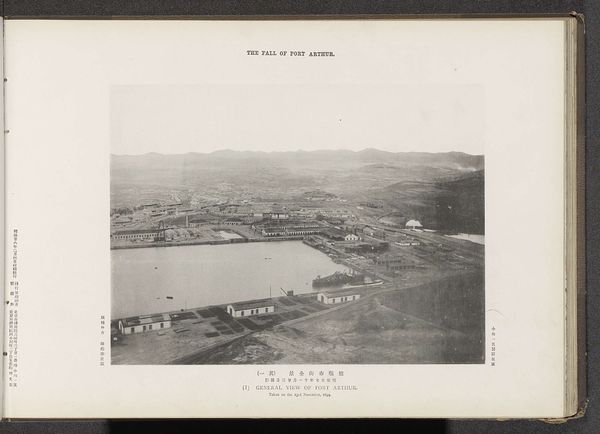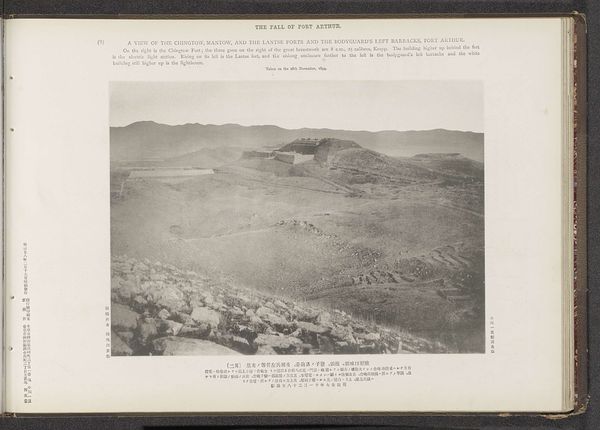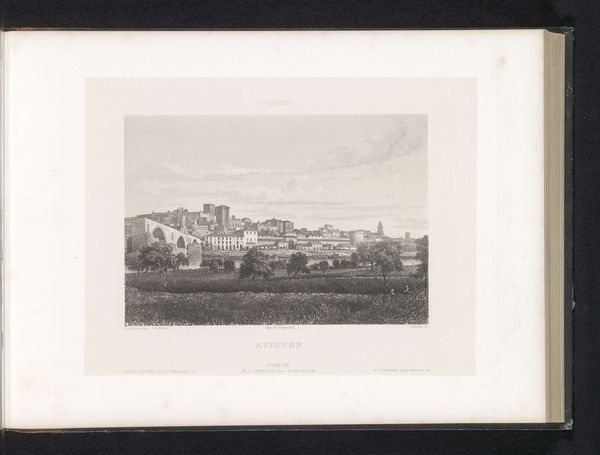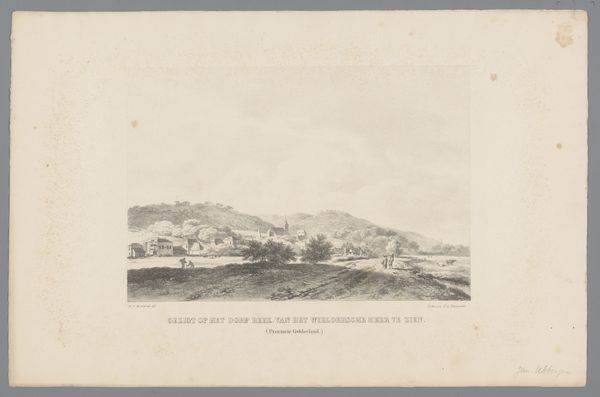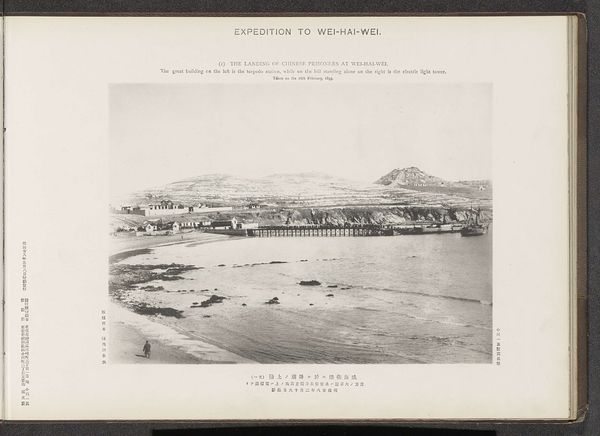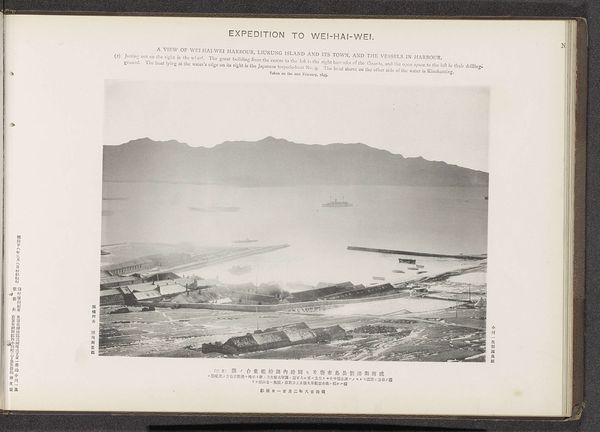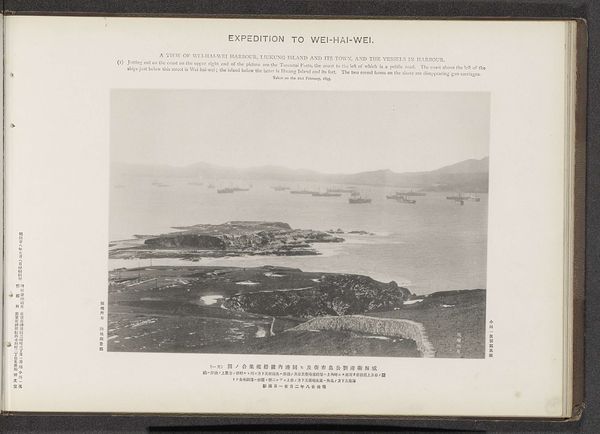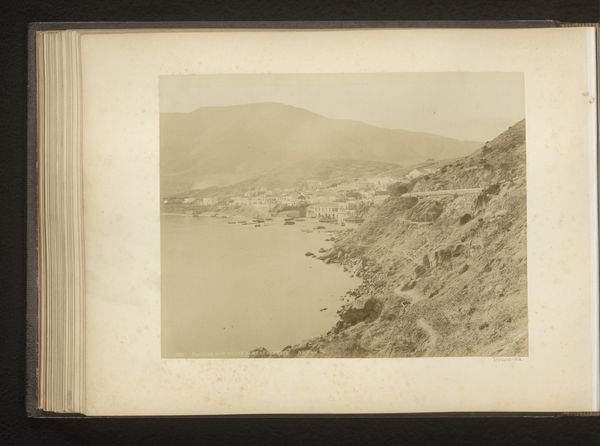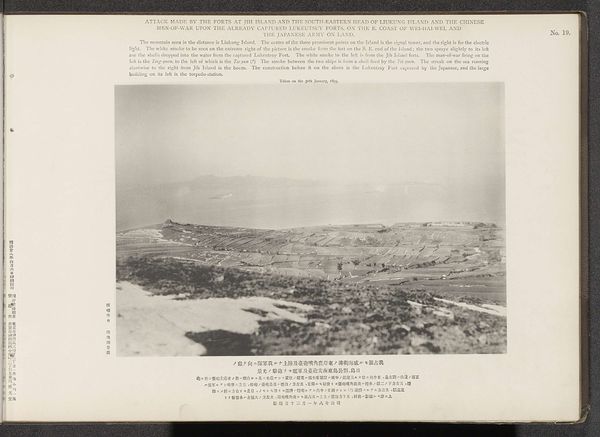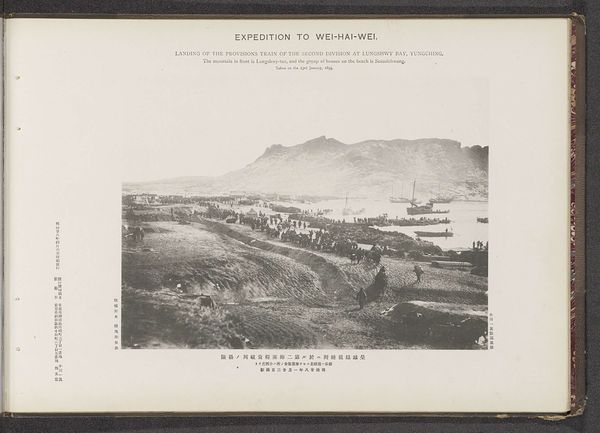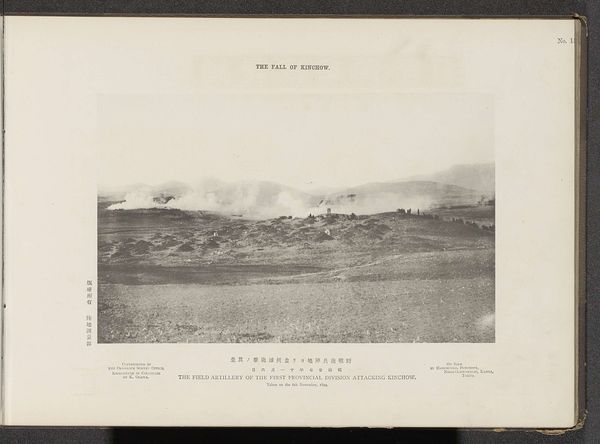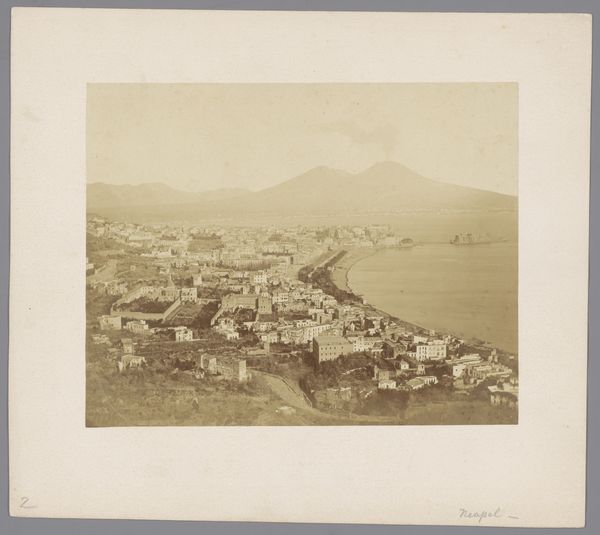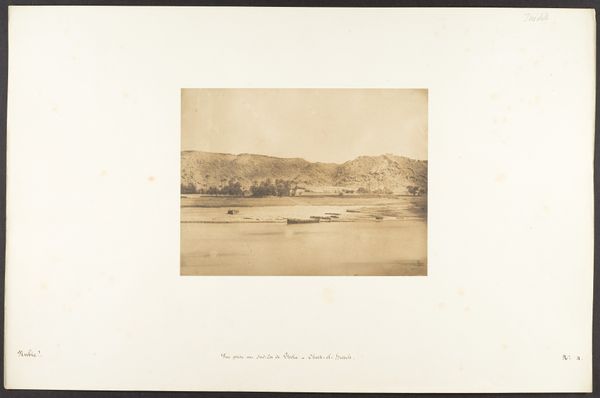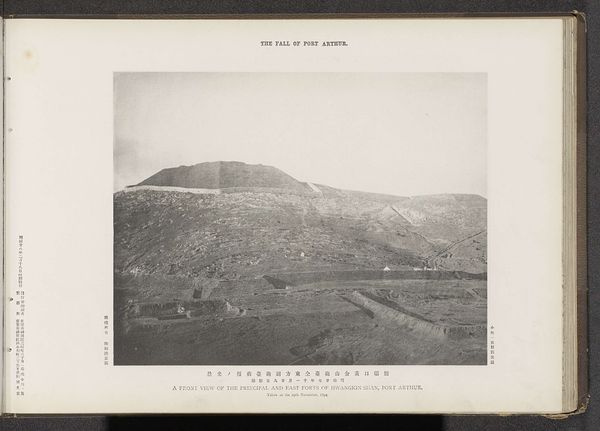
print, photography
# print
#
landscape
#
photography
#
orientalism
#
cityscape
Dimensions: height 213 mm, width 276 mm
Copyright: Rijks Museum: Open Domain
Curator: This photographic print is entitled "General View of Port Arthur," attributed to the Ordnance Survey Office, possibly dating back to 1894. What strikes you first about it? Editor: The composition. The high vantage point coupled with that wide expanse of water and nestled settlements projects such vulnerability. Like it’s exposed, waiting. Curator: It's compelling to think about the technical process required to create such an image at that time. The cumbersome equipment, the labor involved in developing and printing this view. The survey office clearly aimed to represent not only the location, but its strategic potential. Editor: Right, a surveyor's eye! But I see beyond topography. The overall greyish tone hints at suppressed emotions and underlying social tensions of pre-Russo-Japanese war Manchuria. I sense cultural anxieties simmering beneath the surface, mirrored in that flat, somewhat ominous light. Curator: Given the Ordnance Survey Office's involvement, perhaps we should view those emotional resonances as side effects rather than intent. For me, the orientalist elements seem intertwined with a pragmatic gaze focused on infrastructure and navigable routes, reflecting colonial-era mapping projects, and perhaps commercial aspirations of those funding the original photographs, possibly to track production materials within this city. Editor: But a photograph isn't just about objective record! Even if created with surveying intentions, the photograph also becomes a symbol itself, laden with political baggage. Curator: Perhaps so. This print embodies a complex moment where industrial practices intertwined with socio-political and maybe emotional elements. Editor: Indeed, a view presented for one purpose, invariably carrying further narrative resonance. Curator: A simple, objective tool can easily capture much deeper cultural information. Thanks to that, images continue speaking, generation after generation. Editor: Yes. Ultimately, it leaves me wondering about all of the individual lives lived in that one "General View," forever marked by that "Fall."
Comments
No comments
Be the first to comment and join the conversation on the ultimate creative platform.
